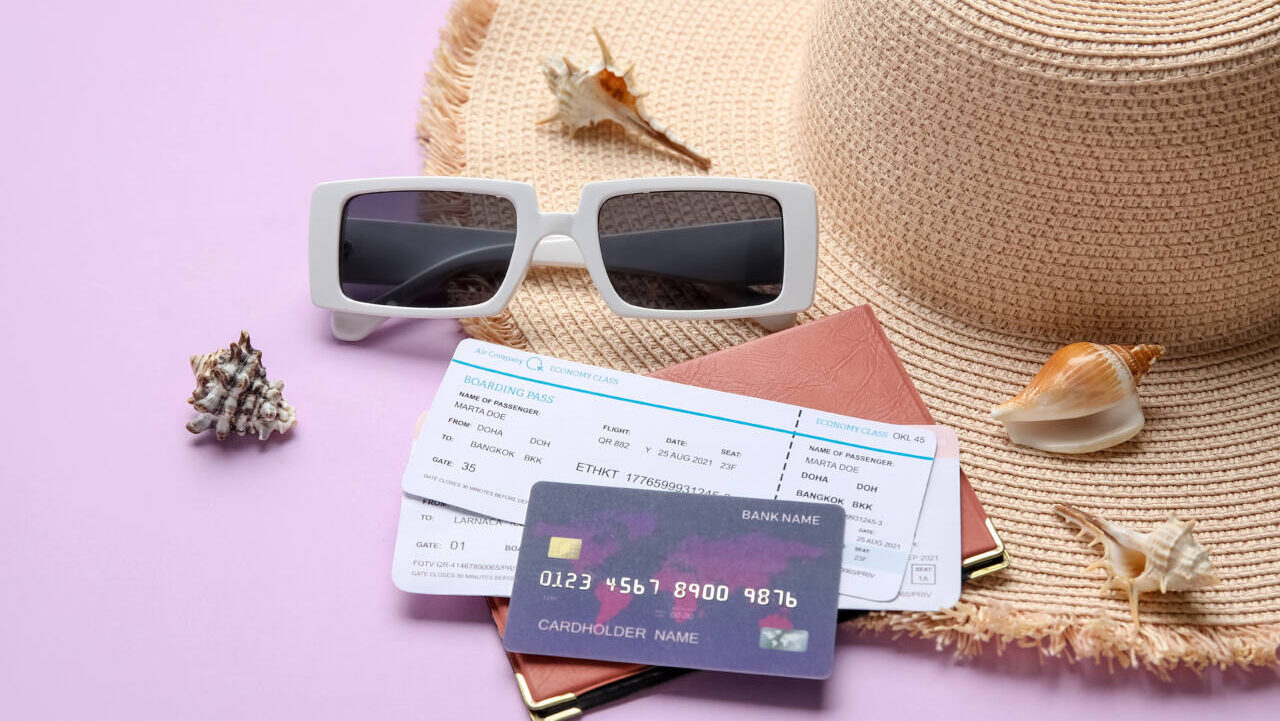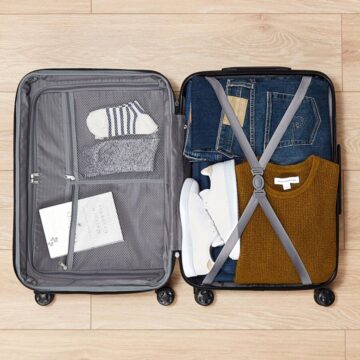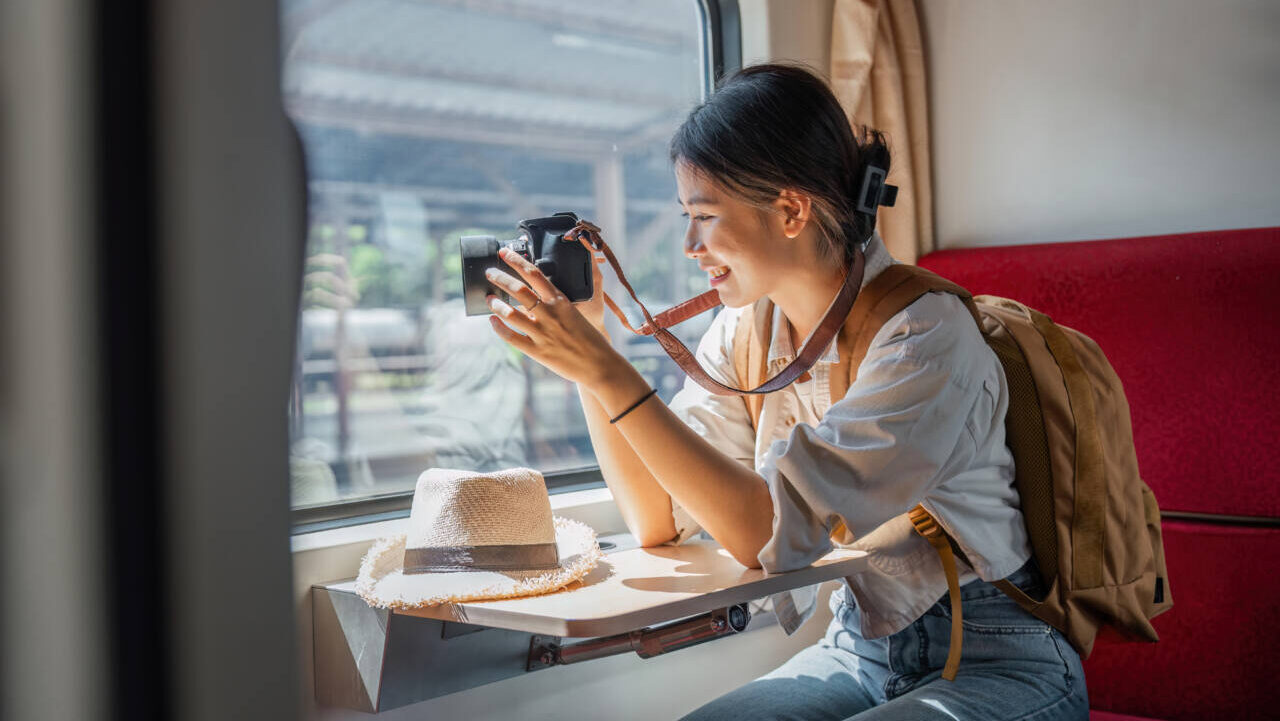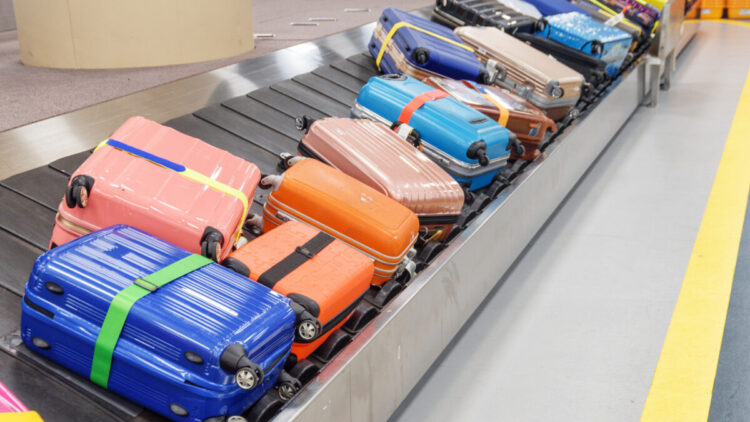Train vs. plane: Which is the better way to travel?
If you're debating between train travel and plane travel, here's what to know.

The products and services mentioned below were selected independent of sales and advertising. However, Simplemost may receive a small commission from the purchase of any products or services through an affiliate link to the retailer's website.
If you’re planning a domestic trip this year (or next), your mode of transportation is probably one of the first things you decide to book. You likely assume traveling by plane is the best option. But what about train travel? When it comes to plane vs train, is one actually better than the other?
If you’ve ever wondered whether a train might better than a plane, there are a few things to consider when making the decision. From cost and time to the experience itself and availability, here’s what to consider hen decided between planes and trains.
Cost
First things first, how much does each option cost? Let’s face it, that may be the top factor you consider when determining your mode of travel. The answer isn’t cut and dry, though. Oftentimes, flying is the more expensive option, but not always. Here’s what you should know.
Plane
- Long trips are usually cheaper by plane.
- Lots of competing airline carriers leads to more price options.
- But on a plane, an upgrade to first class is often prohibitively expensive.
In general, if you’re going on a long trip, flying is more cost-effective. Long train rides tend to be pricy, and they often require that you pay for a sleeper room that ups the cost even more.
And you can save money on plane flights by using an airfare search site (such as Google Flights) that finds the lowest-priced options. You can also cut costs by using an airline credit card like the United Gateway card, which allows you to earn airline miles on your everyday purchases. Plus, booking sites like Expedia allow you to shop based on flight deals, so if you’ve got some time before you need to book your ticket, checking there first could save you money.
MORE: Check current expedia flight deals
Train
- For short distances, trains tend to be cheaper.
- Train stations are often centrally located, eliminating the need for expensive car services to get there.
- On a train, it’s often possible to upgrade to first class for under $100.
For short trips, train travel tends to cost less. Say you’re traveling from New York to Boston, buying the ticket three weeks in advance. According to the Boston Discovery Guide, the cost of a coach seat on Amtrak’s Northeast Regional train might cost as low as $53 for a one way ticket, while a coach seat on a plane in that time frame would start at about $60 – $100+ for a one way ticket.
On the West Coast, the cost-effectiveness of train travel is even more stark, according to the Points Guy. A train ride from Seattle to Portland might set you back $72 in coach or as low as $112 in business class. But the same route by plane would cost at least $300.
Luggage fees on trains tend to be more generous than on planes. (On Amtrak, you get the first two bags free.)
Upgrading is a lot more affordable on trains, too. On Amtrak you can use an online tool called BidUp to score premium seats at an affordable price. You can also check sites like Kayak for affordable deals throughout the country.
MORE: Check train travel prices at Kayak
Time
Sure, planes can be faster than trains. But when you travel by air, you have to factor in extra time to arrive early at the airport, check bags and move through security lines. So in some cases, the difference in travel time can be negligible. Again, it all depends on how far you’re traveling.
Plane
- Planes cover long distances in hours, rather than days.
- But planes also require lengthy spells in the airport.
- Unlike with train travel, planes offer nonstop, direct flights without stopping along the way.
If you’re in a hurry and traveling across the country, it’s hard to dispute that you’ll be better served by a plane. Six to eight hours in the air is far more appealing than three to five days on the rails!
Or, say you’re considering that previously mentioned trip from New York to Boston. Amtrak’s Northeast Regional will get you there in four to five hours, as opposed to a 90-minute plane flight.
On the other hand, for that same flight, you may have an hour’s drive to the airport, a 90-minute wait before boarding and a 30-minute wait at the baggage carousel on the other end. In that case, your total travel time might be similar to the time you’d spend on the train.
Train
- Most trains are much slower than planes, unless you take a high-speed train like the Acela.
- Due to poor railroad infrastructure, connections are limited and roundabout routes are often required.
- But there are no security checkpoint lines to wait in, and you don’t have to arrive an hour early to board a train.
While trains are slower than planes, high speed trains — introduced a few decades ago — can close the time gaps a bit. Amtrak’s Acela covers the same New York-to-Boston territory as the Northeast Regional, and it does it in three hours and 50 minutes (though it does cost about $100 more).
That said, one of the factors that slows down train travel is the lack of service in many parts of the country. Outside of the big coastal cities, many major metro areas have little or no Amtrak service, so passengers have to take circuitous routes to get to where they need to be.
Experience
MORE: The 13 train travel essentials you shouldn’t forget on your next trip
If there’s one area where trains can outperform planes, it’s in the experience traveling. Do you know anyone who flies for the fun of it? Unless you are traveling in first class, the seating on a plane is usually cramped — and the meal options are either sparse or nonexistent. No doubt you can come up with one or two other complaints to add. Train travel, on the other hand, can feel like an adventure.
Plane
- Passengers commonly deal with crowded flights, shrinking legroom and delays.
- Airports are often located on the outskirts of cities, making them a hassle to get to.
- But some airlines do offer free Wi-Fi and some brand-name snacks.
- For many, the rapid travel time makes up for the subpar experience.
Airlines squeeze as many people as possible into increasingly cramped planes; passengers’ desire to avoid baggage fees leads to lots of extra stuff in the cabin as well. And since meals are no longer served (except on long-haul flights), the family next to you is probably chowing down on fast food from Panda Express and McDonald’s, inches away from your face. Not fun.
That said, the onboard entertainment on planes has definitely improved over the last few years. Many airlines, like Delta and JetBlue, offer free Wi-Fi and plentiful movies and TV shows to watch. If you bring a Bluetooth adapter, you can enjoy these selections with your own wireless headphones.
While meal service has been drastically curtailed, some airlines do serve some brand-name quality snacks. And of course, you can always bring your own snacks onto the plane. Solid food (no gels or liquids) can be brought from your home and onto a plane as long as they’re stored in your carry-on. Just be sure you’ve got high quality food storage containers that won’t result in a mess when you go to open your bag.
Train
- Trains offer an opportunity to see the landscapes you’re passing through.
- Trains are roomier, more child-and-pet-friendly, and offer more dining options.
- Train stations are often in the heart of metro areas and are easier to get to.
While flying comes with an irritating to-do list (deciphering liquid restrictions, weighing your luggage, removing your shoes, opening laptops, etc.), getting on a train is much simpler. The luggage policies are more generous. (Want to carry on your guitar or surfboard? No problem.)
A leisurely train ride can be a lovely way to enjoy the landscape as you travel, and you have more room to stretch your legs or get up and walk around. Some trains (like Amtrak’s Coast Starlight from L.A. to Seattle) have sightseeing lounges that allow passengers to take in the views as part of the travel experience. If you’re really committed to making travel memories, you can be sure to pack things like binoculars for sight-seeing or get a lens attachment for your iPhone or Android to capture better photos.
Availability
Airlines generally offer many flights a day, while train schedules can be much more limited. But it all depends on your destination. While both travel modes offer plenty of options to get you from New York to D.C., a plane is better suited to get you to Des Moines in a hurry.
Plane
- Plane travel gives you many options on price, carrier and timing.
- To find available flights for the best price, book one to three months in advance.
- There are many airfare search sites to choose from, in addition to booking directly with the airline.
Planes beat trains when it comes to availability. When booking flights, you have many options in carriers, price and timing. Your best bet is to use an airfare search site like Kayak, which will show you all the options and the average prices in a date range.
Train
- Many U.S. cities are inaccessible by train.
- Train availability is best between large cities on the coasts.
- Popular train routes can sell out during peak travel times.
There’s just one major train service in the U.S. — Amtrak — and you can book tickets on their website or app up to 11 months in advance. Trains tend to sell out around holidays and peak travel times, so Amtrak recommends you book as early as possible. The site shows seat availability in real time, so you can see how fast your desired route is selling out.
Whether a train will be available depends on your destination. Many U.S. cities don’t have railroad access at all. While people in big coastal cities have a number of good rail options, the same isn’t true when you move further inland.
If you’ve been depending on train vs. plane travel, these key components might just be enough to help you finally make that decision.














